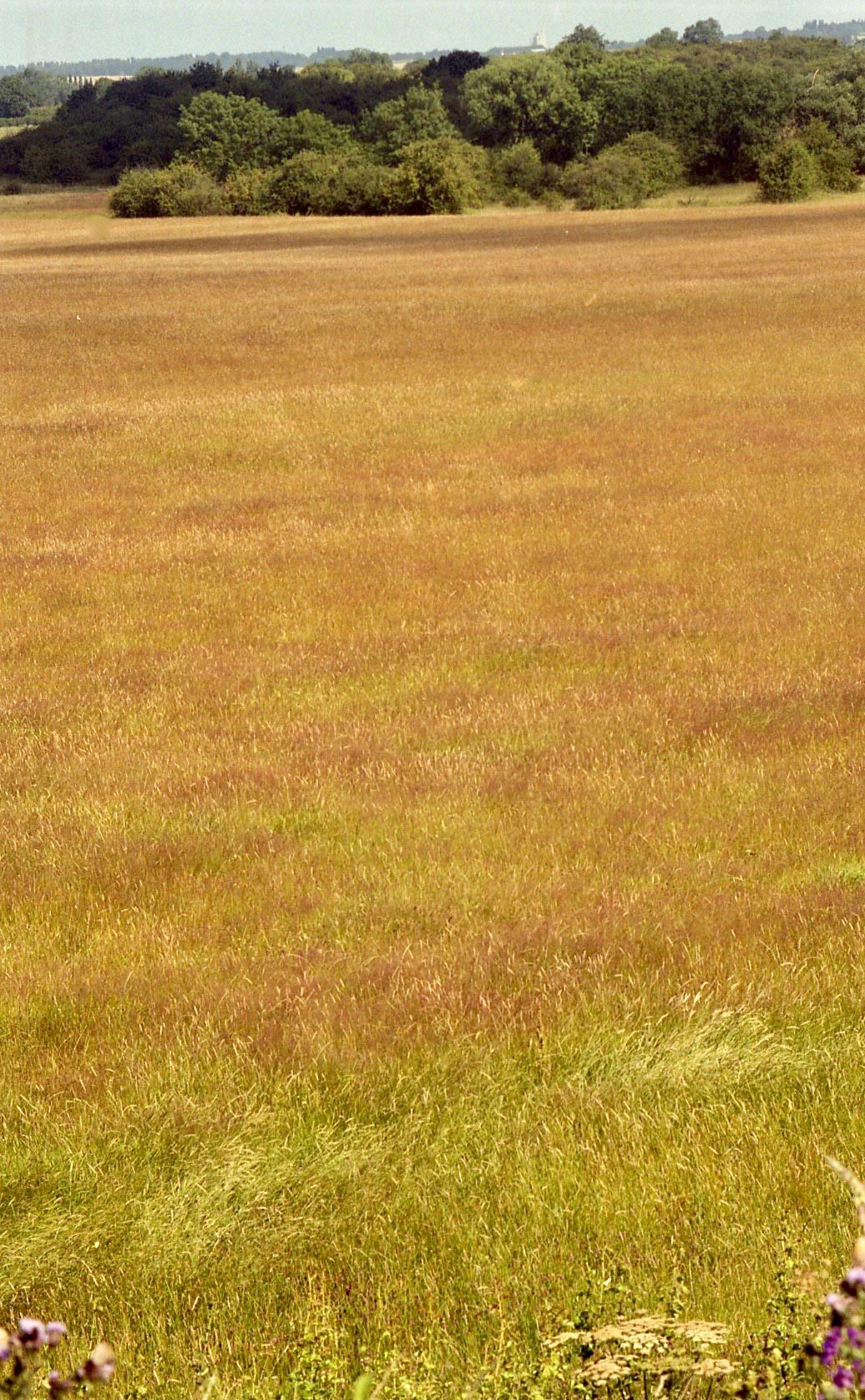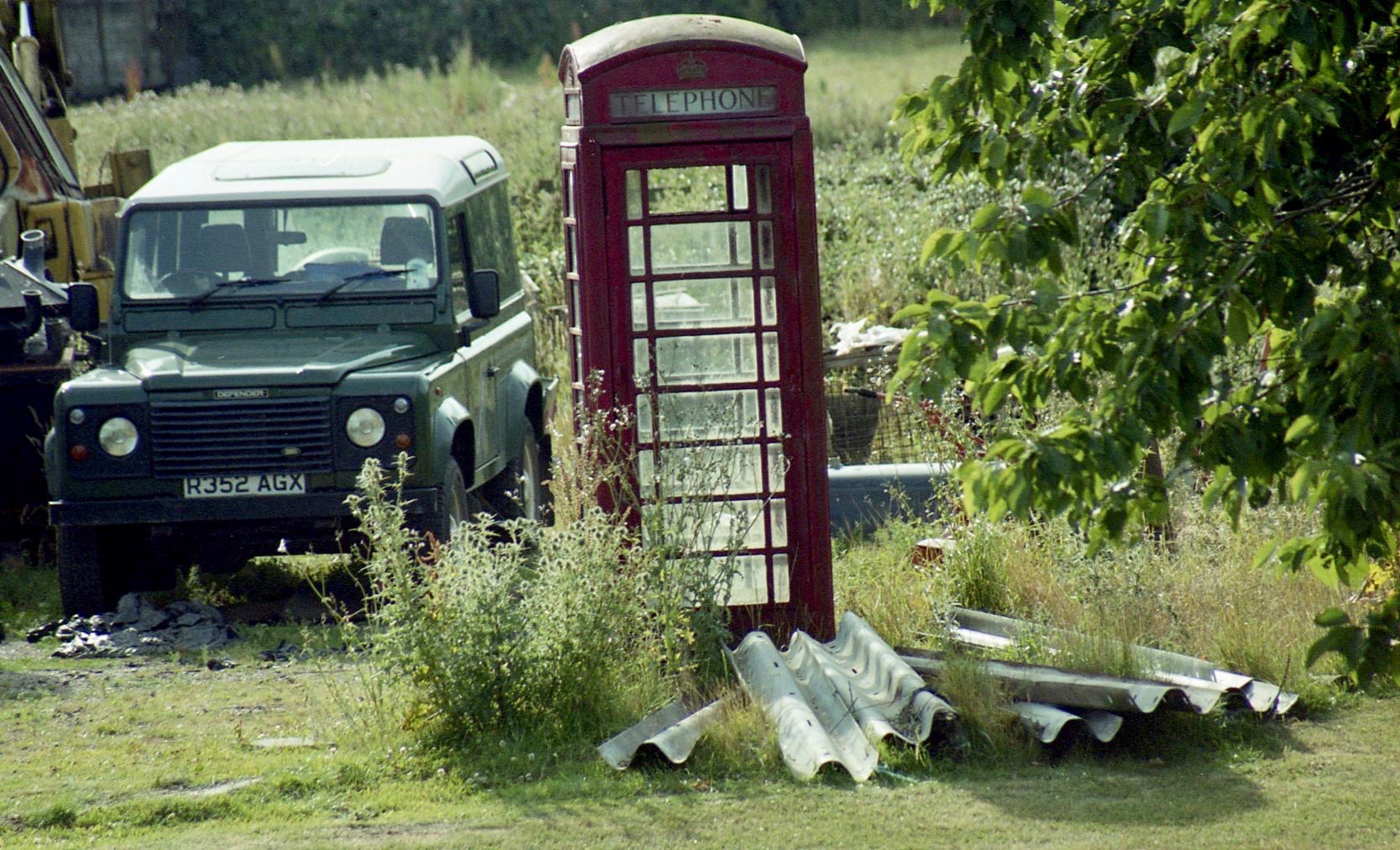On the next leg of the Henley to Newark trip of July 2003


grasses and wild flowers still covered the footpaths, and I was treated to what I believe was my first sight of a damselfly.



Sheep and fields of grass occupied the landscape on the opposite bank of the Oxford Canal,

which seemed an unlikely resting place for an iconic red telephone box.


I caught up with Pacific Pete at the Braunston Turn Bridges. theoxfordcanal.co.uk website informs me that this section of the waterway, which shares its route with the Grand Union Canal Main Line as far as Napton Junction, is ‘one of the few places on the entire stretch of the Oxford Canal where there is narrow boat access to another river or canal. It is worth noting from the point of view of use by cyclists and walkers that the towpath really deteriorates very soon after Braunston Turn Bridges. In fact this section of the canal has hardly any towpath in some places and is a real mess suffering from collapse, potholes, mud, nettles and brambles. It can be all but impassable in places if there has been any sort of recent wet weather.’
Unfortunately, I didn’t know this.
According to Wikipedia, ‘The Horseley Ironworks (sometimes spelled Horsley and Iron Works) was a major ironworks in the Tipton area in the county of Staffordshire, now the West Midlands, England.
Founded by Aaron Manby,[1] it is most famous for constructing the first iron steamer, The Aaron Manby, in 1821.[2][3] The boat was assembled at Rotherhithe. She was only the first of a number of steamboats built on the “knock-down” principle. The ironworks have also been responsible for the manufacture of numerous canal and railway bridges of the 19th century.
The ironworks were built near the Toll End Communication Canal[4] on the Horseley estate, which had been sold by their owner at the turn of the 19th century[5] due to demand from engineers wishing to profit on the construction of the BCN Main Line through the estate. The date when the ironworks were constructed is unknown but is believed to have been by 1815.[5] Industry in the area prospered and the location retained the name of the Horseley estate as shown in an 1822 survey of the area.[6]
With the increasing popularity of canals, the ironworks quickly became popular for manufacturing canal bridges, mainly in the local vicinity.[7]Canal bridges made by the ironworks include the Engine Arm Aqueduct(1825), two roving bridges at Smethwick Junction (1828),[8][9] Galton Bridge(1829), and Braunston Towpath Bridges (1830).[10][11] By the end of the canal construction era, Horseley Ironworks had emerged as one of the most prolific manufacturers of canal bridges in the West Midlands region,[5]especially in Birmingham.[12] This was a result of their signature bridge design which had become popular amongst canal constructors. The design has been replicated more recently, for example in Birmingham during the regeneration of Gas Street Basin where Worcester Bar is linked to Gas Street.[13]
Horseley Ironworks were also responsible for manufacturing in the railwayindustry. Railway bridges constructed included that of the viaduct for the London and Birmingham to Holyhead railway at Shifnal, Shropshire which was cast in 1848.[14] As well as manufacturing bridges, they also produced locomotives.[15]
The company also manufactued construction steelwork for the pier of Ryde, the Palace Theatre in London, Rugby railway station, a seaplane hangar in Las Palmas and the Dome of Discovery at the 1951 Festival of Britain.[16]
People who have worked for the iron foundry include Charles Manby, the son of Aaron Manby, James Thomson,[17] William Johnson[18]and Richard Roberts.[19]
The firm moved in 1865 to a site on the now defunct Dixon’s Branch, off the BCN New Main Line (Island Line), near the South Staffordshire Railway line. The factory survived under a succession of owners until 1991, when it was closed down and subsequently redeveloped as a housing estate.[4]‘



I managed to keep up with Sam and James in the boat whilst, having passed under the elegant bridge from the time of Queen Victoria’s predecessor, King William IV, they negotiated their way through a narrowboat-congested area to the next flight of locks. As can be seen, there was barely room for the lengthy ocean-going oars.

Eventually the rower was once more under way.
After this, I had to find my way up and down various hilly areas, where I was surprised in the darkness by the only badger I have ever seen alive. I was amazed at how fast it could run. It was fortunate that the creature took off in the opposite direction, because running anywhere, by that time, was quite beyond me.
Being a boater, I would love to cruise the canal!
Thanks a lot, John
It’s beautiful weather, crowned by a really beautiful, graceful bridge.
Indeed. Thanks very much, John
I wonder who was more startled, you or the badger?
Good question, Sheree. Thanks a lot
Lots of fascinating history and tales of perseverance.
Thank you very much, Pat
Photos #4 and #6 look as if they’re straight out of Thomas Hardy.
Thanks very much, Liz
You’re welcome, Derrick.
Such beautiful landscapes, and yes, too bad you didn’t know–though it did give you a story about a badger.
It did – this remains my only live sighting. Thanks very much, Merril
That’s one more than I have!
I still can’t picture that boat in the ocean, because this journey was difficult enough.
Quite so, GP. At least there was plenty of room. Thank you very much
What beautiful scenes…what a wonderful adventure!

Wowza! A badger!!! I’ve never seen one in the wild. A damselfly! Cool, too!
That bridge is a work of art!
(((HUGS)))
PS…Wonder if the badger went home and told his family, “I saw my first Derrick today! YAY!”
Thank you so much, Carolyn. I’ve never seen another badger. X
I’m amazed at how you kept up with the boat.
The only time I saw a badger was over twenty years ago in the field closest to the house. It walked round and around in very small circles for about ten minutes before running off into the woodland.
Thanks very much, Sue. The locks helped a lot
Love the history and your meeting a badger.
Thank you very much, Sherry
On wow, a close encounter
Thank you very much, Ribana
Beautiful, beautiful bridge! Glad the badger ran. Sorry about that path.
Thanks very much, Laurie
Another interesting chapter.
Thank you very much, Mrs W
You’re welcome.
What a journey!
More to come, Anne. Thank you very much
So many nice memories.
Thanks very much, Bridget
Those are beautiful fields along the canal. Even Dr. Who in his Tardis telephone box dropped in to watch Sam row by.
Nicely observed Lavinia. Thank you very much
I once lived near Braunston, there was a good pub there but I have forgotten its name.
Thanks a lot, Andrew
Fascinating history of iron boats and canals.
Thank you very much, Dolly
You are very welcome, Derrick.